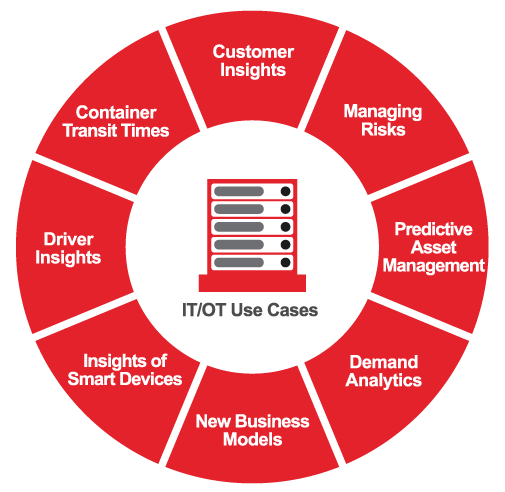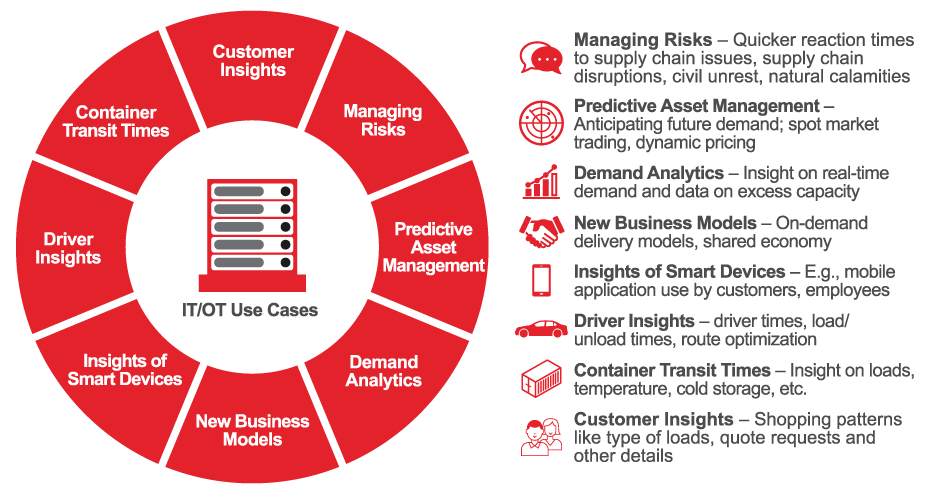THE FUTURE OF URBAN TRANSPORT
& LOGISTICS
“The future of personal and freight mobility will be about optimising the integration of technology alongside physical infrastructure and hardware.”
In the era of IoT and digital transformation, the transport and logistics industry is being affected and disrupted like all other sectors. The future of personal and freight mobility will be about optimising the integration of technology alongside physical infrastructure and hardware.
IT-OT Opportunities in Urban Transport & Logistics
“From driving consumer insights to understanding product flows such as container lead times, optimised routes, and driver insights, IT-OT is revolutionising urban transport”


Technology is already making headways into solving the issues of safety, emissions, congestion, and traffic delays. The true impact will become visible when Information Technology (IT) and Operational Technology (OT) converge to define the true emergence of the IoT era in mobility. IT-OT convergence in mobility requires interoperable and common standards that move assets to data centres and loop back with data and empowered reactions.
innovation in this dynamic space
The layers of security, analytics and data management in between will be of utmost importance for delivering the future vision of digital urban mobility. Just take the technologies of smart trucks or cars for example: the IT-OT convergence is critical for the successful operation of these machines at every level. The manufacturing and cloud expertise must merge to ensure zero accidents or fatalities, which will become the new ‘normal’. Delivering such outcomes—as well as many other examples in the digitised future—will present huge challenges and opportunities for innovation in this dynamic space.